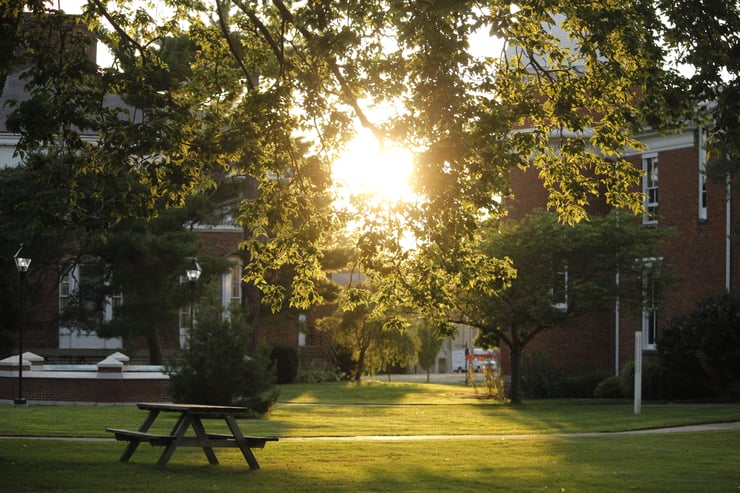A Lowell, Massachusetts resident since 1998, I’ve watched with fascination as UMass Lowell (UML) has transformed itself under the leadership of former Congressman Marty Meehan, who became Chancellor in 2007. When I moved to the area, UML was widely perceived as a safety school—one lifelong Lowell residents have described to me as “a place for local kids to go get a bargain-basement education”—not a bad school, but nothing stellar. It’s not that school anymore.
Enrollment is up 40% since 2007. UML ranks 158 in U.S. News & World Report’s2014 edition of Best Colleges, National Universities category, up 12 spots since 2013 and 25 spots in the past three years. It ranks tenth this year on Forbes magazine’s25 Best Value Colleges, and was ranked tenth by Payscale, Inc. on return on investment among public institutions nationwide. Business Insider named it the No. 1 “Most Underrated College in America.”
UML successes don’t end there. In 2013, the UML River Hawks Division 1 Hockey Team won Hockey East and advanced to the Frozen Four for the first time since it entered D1 in 1984. All other sports, formerly Division 2, made the jump to Division 1 as part of the America East Conference this fall.
All these changes are getting attention. The regional newspaper, the Lowell Sun, last year featured a 72-page digital special on the University’s achievements. And last month, WCVB-5 Boston’s award-winning Chronicle program featured the transformation of Lowell—both university and the city itself (you can watch the UML segment here starting at the 2:10 mark).
None of these successes happened by chance. As the Lowell Sun reported, when it proposed naming its feature “The Miracle at UMass Lowell,” Chancellor Meehan balked, emphasizing that “every improvement has been strategically planned by university leaders.” That planning has included more than $500 million in capital investments, including new student housing, dining hall upgrades, new parking garages, and two new academic buildings—the first academic buildings constructed on campus since the 1970s. Construction is currently underway on University Crossing, a hub that will connect the University’s three campuses to each other and to downtown Lowell and feature a one-stop service center for students, a new bookstore, a café, space for 150+ student organizations, and more. Planning has begun for the new Pulichino Tong Business Building, which will house the University’s Robert J. Manning School of Business. And on November 20, Massachusetts Governor Duval Patrick announced a $20 million investment to renovate and modernize Perry Hall, home to the university’s engineering program. The River Hawks move to Division 1 was also a carefully plotted step in that strategic plan—a move to increase the university’s visibility and improve the student experience.
These successes also reflect a strong partnership between the University and its home city, a place with its own story of reinvention. This shared purpose and spirit of collaboration is visible everywhere, from the transformation of old properties into gleaming new facilities, to the university’s incubator program for high-tech startups, to the Graduate School of Education’s partnerships with the Lowell National Historical Park and the city’s public schools.
Through all of this, one thing is clear: the transformation of UMass Lowell is a story in progress. The River Hawks are rising—and driven to continue their momentum toward the top.











